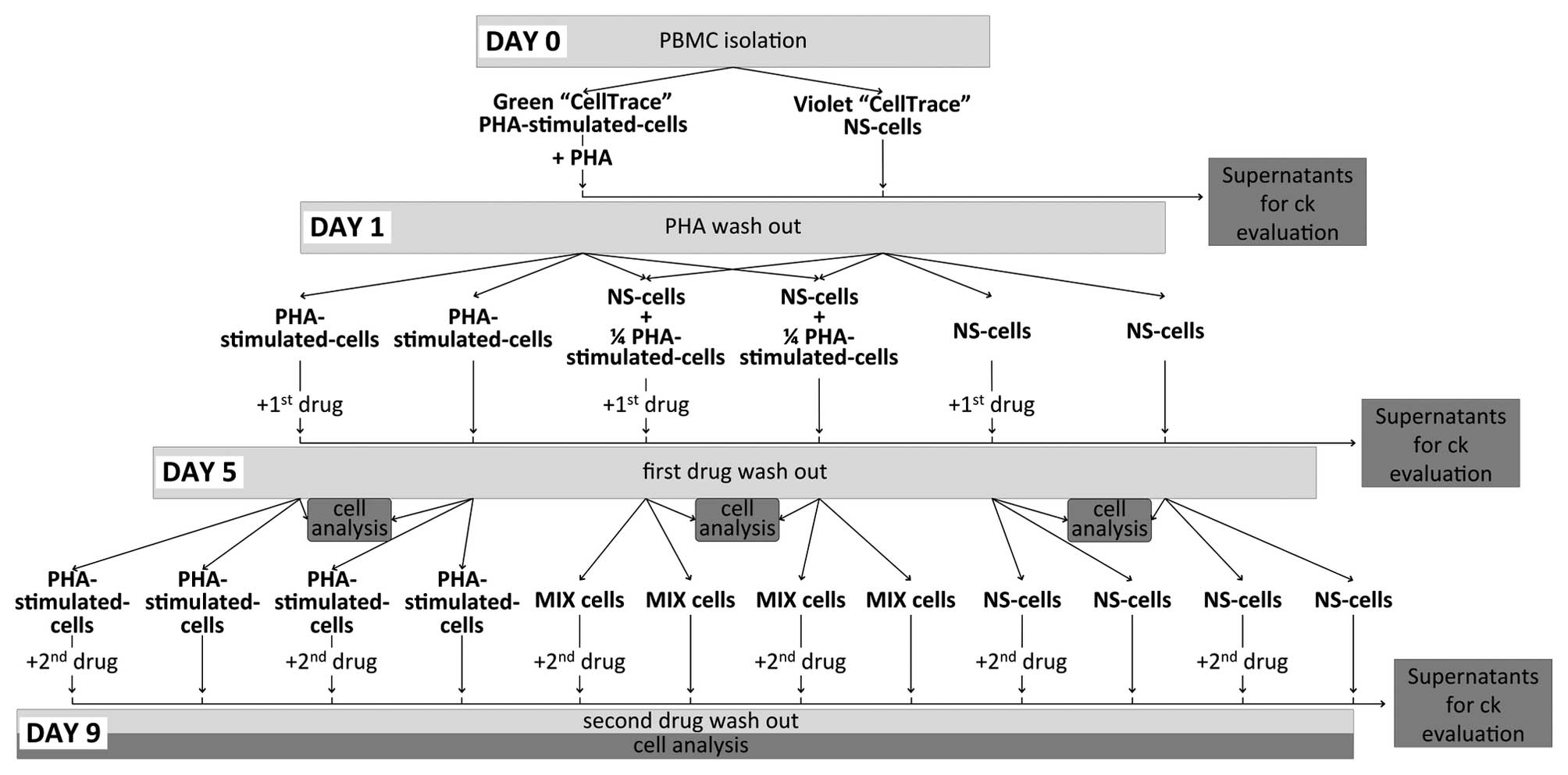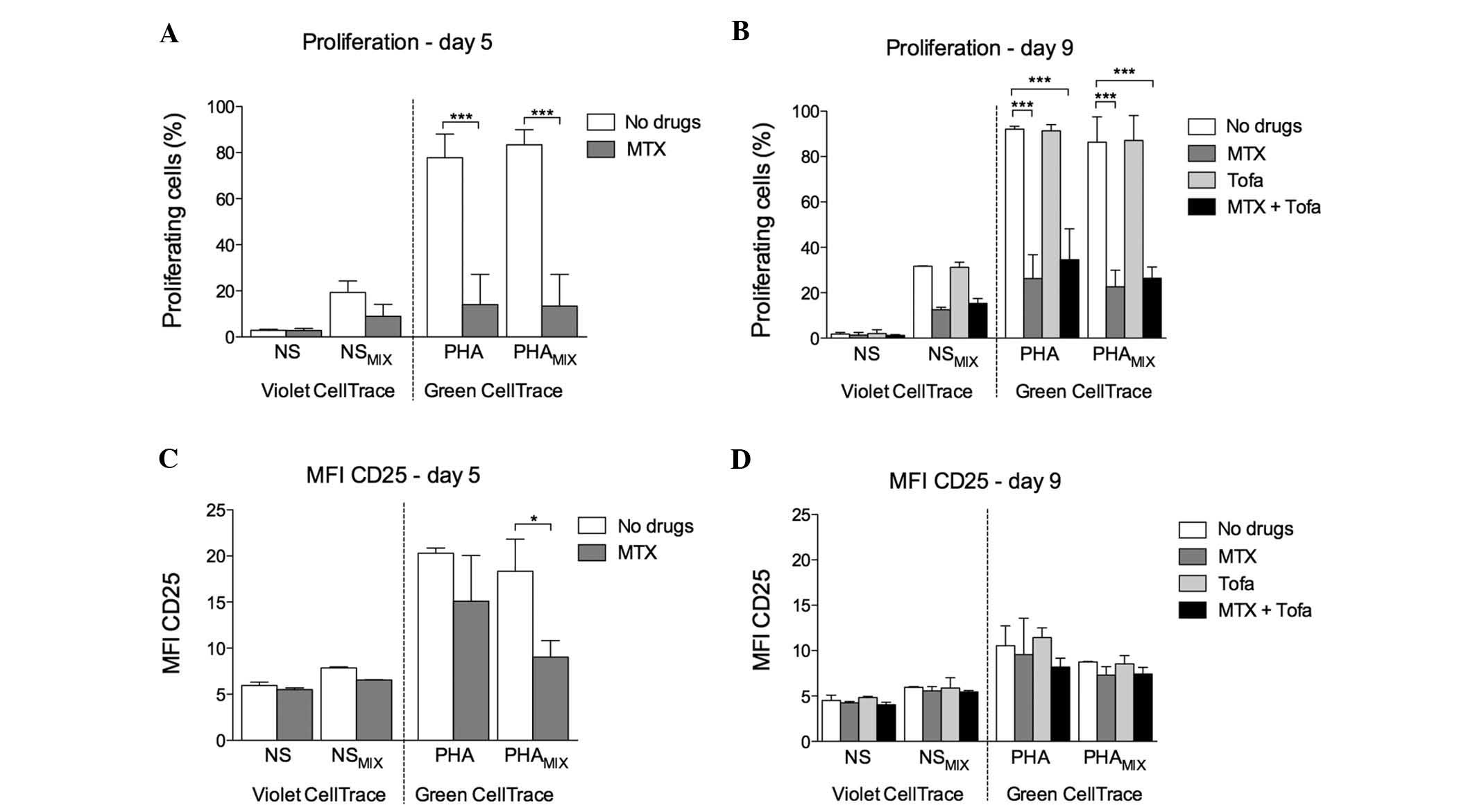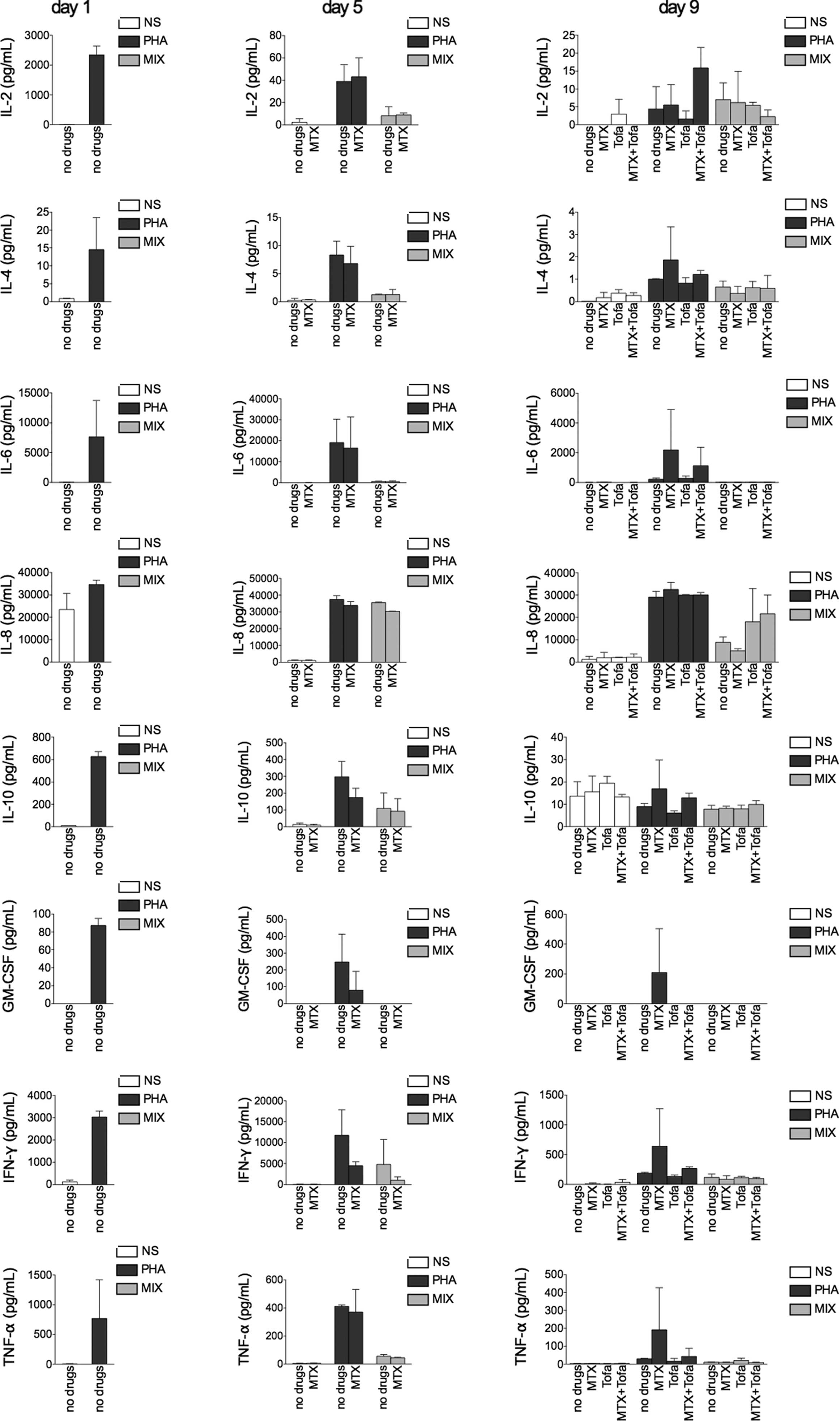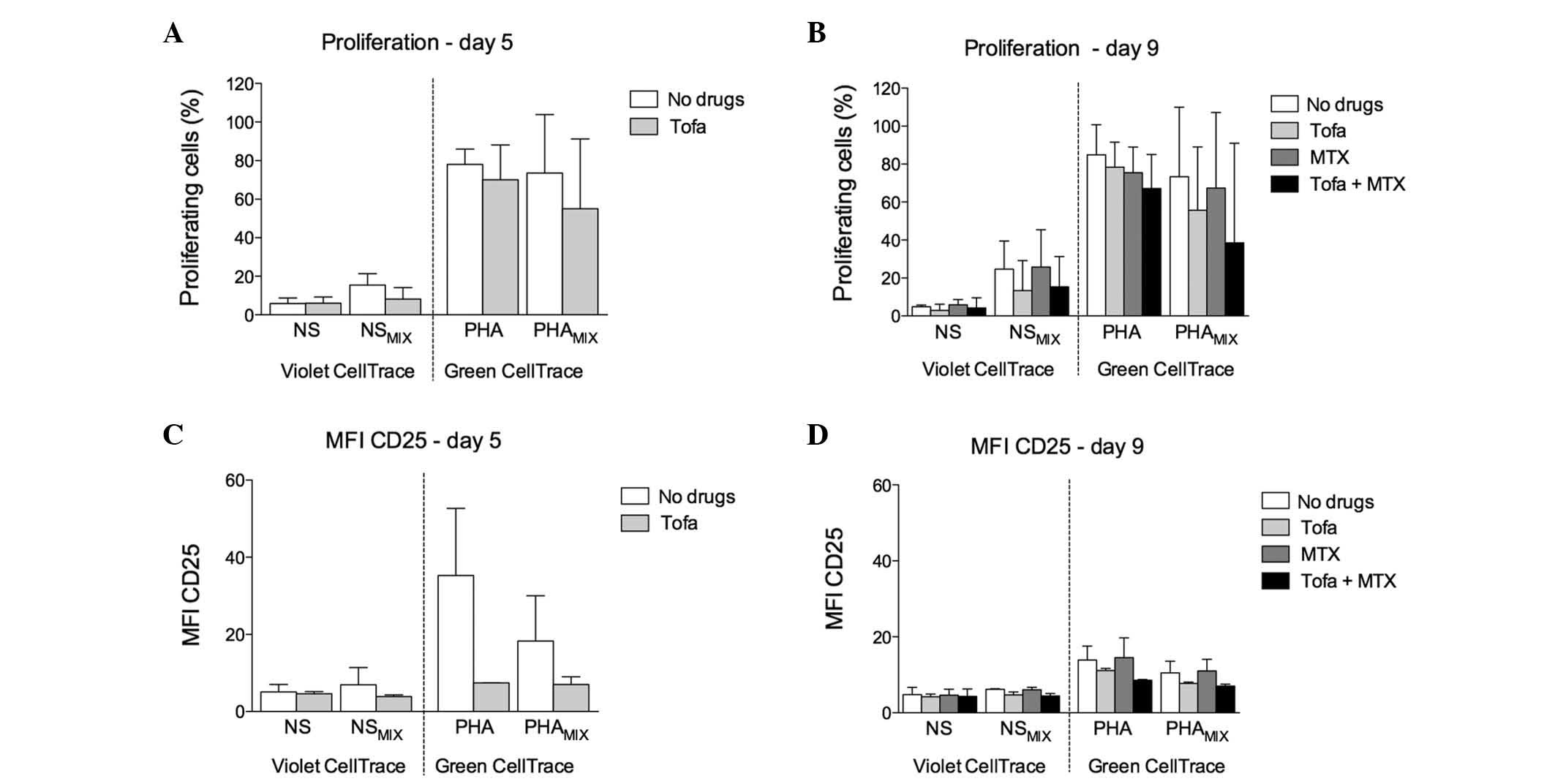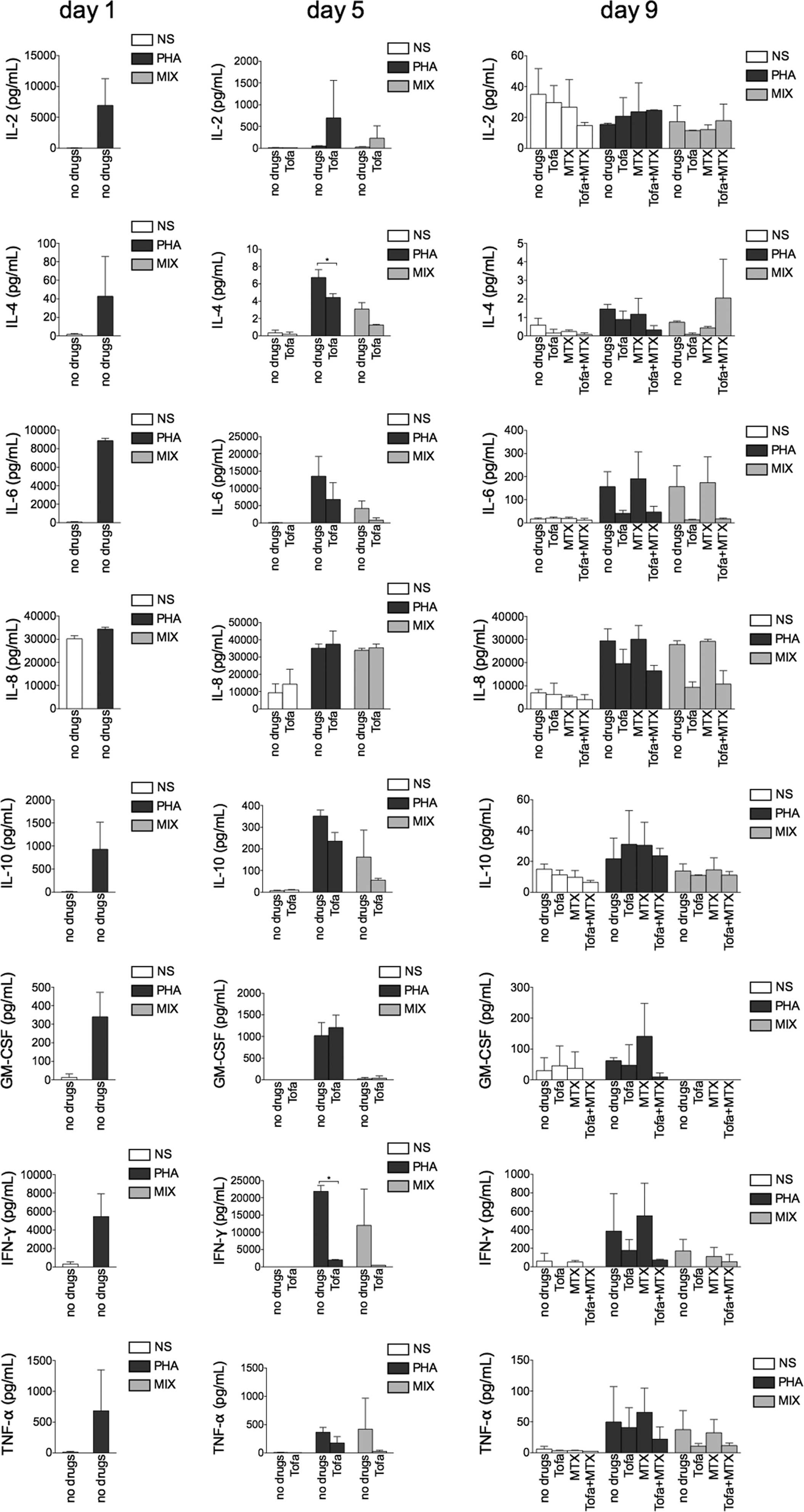|
1
|
McGonagle D, Aziz A, Dickie LJ and
McDermott MF: An integrated classification of pediatric
inflammatory diseases, based on the concepts of autoinflammation
and the immunological disease continuum. Pediatr Res. 65:38R–45R.
2009. View Article : Google Scholar : PubMed/NCBI
|
|
2
|
Uhlig T, Moe RH and Kvien TK: The burden
of disease in rheumatoid arthritis. Pharmacoeconomics. 32:841–851.
2014. View Article : Google Scholar : PubMed/NCBI
|
|
3
|
Kremer JM, Bloom BJ, Breedveld FC, Coombs
JH, Fletcher MP, Gruben D, Krishnaswami S, Burgos-Vargas R,
Wilkinson B, Zerbini CA and Zwillich SH: The safety and efficacy of
a JAK inhibitor in patients with active rheumatoid arthritis:
Results of a double-blind, placebo-controlled phase IIa trial of
three dosage levels of CP-690,550 versus placebo. Arthritis Rheum.
60:1895–1905. 2009. View Article : Google Scholar : PubMed/NCBI
|
|
4
|
Tanaka Y and Yamaoka K: JAK inhibitor
tofacitinib for treating rheumatoid arthritis: From basic to
clinical. Mod Rheumatol. 23:415–424. 2013. View Article : Google Scholar
|
|
5
|
Shi JG, Chen X, Lee F, Emm T, Scherle PA,
Lo Y, Punwani N, Williams WV and Yeleswaram S: The
pharmacokinetics, pharmacodynamics, and safety of baricitinib, an
oral JAK 1/2 inhibitor, in healthy volunteers. J Clin Pharmacol.
54:1354–1361. 2014. View
Article : Google Scholar : PubMed/NCBI
|
|
6
|
Keystone EC, Taylor PC, Drescher E,
Schlichting DE, Beattie SD, Berclaz PY, Lee CH, Fidelus-Gort RK,
Luchi ME, Rooney TP, et al: Safety and efficacy of baricitinib at
24 weeks in patients with rheumatoid arthritis who have had an
inadequate response to methotrexate. Ann Rheum Dis. 74:333–340.
2015. View Article : Google Scholar
|
|
7
|
Wailoo A, Hernández MA, Scott IC, Ibrahim
F and Scott DL: Cost-effectiveness of treatment strategies using
combination disease-modifying anti-rheumatic drugs and
glucocorticoids in early rheumatoid arthritis. Rheumatology
(Oxford). 53:1773–1777. 2014. View Article : Google Scholar
|
|
8
|
Verschueren P, Esselens G and Westhovens
R: Daily practice effectiveness of a step-down treatment in
comparison with a tight step-up for early rheumatoid arthritis.
Rheumatology (Oxford). 47:59–64. 2008. View Article : Google Scholar
|
|
9
|
Lee YH, Bae SC and Song GG: Comparative
efficacy and safety of tofacitinib, with or without methotrexate,
in patients with active rheumatoid arthritis: A Bayesian network
meta-analysis of randomized controlled trials. Rheumatol Int.
35:1965–1974. 2015. View Article : Google Scholar : PubMed/NCBI
|
|
10
|
Piscianz E, Valencic E, Cuzzoni E, De
Iudicibus S, De Lorenzo E, Decorti G and Tommasini A: Fate of
lymphocytes after withdrawal of tofacitinib treatment. PLoS One.
9:e854632014. View Article : Google Scholar : PubMed/NCBI
|
|
11
|
Piscianz E, Cuzzoni E, De Iudicibus S,
Valencic E, Decorti G and Tommasini A: Differential action of
3-hydroxyanthranilic acid on viability and activation of stimulated
lymphocytes. Int Immunopharmacol. 11:2242–2245. 2011. View Article : Google Scholar : PubMed/NCBI
|
|
12
|
Lyons AB, Blake SJ and Doherty KV: Flow
cytometric analysis of cell division by dilution of CFSE and
related dyes. Curr Protoc Cytom Chapter. 9:Unit9.11. 2013.
View Article : Google Scholar
|
|
13
|
O'Dell JR, Mikuls TR, Taylor TH, et al:
CSP 551 RACAT Investigators: Therapies for active rheumatoid
arthritis after methotrexate failure. N Engl J Med. 369:307–318.
2013. View Article : Google Scholar : PubMed/NCBI
|
|
14
|
Lee EB, Fleischmann R, Hall S, Wilkinson
B, Bradley JD, Gruben D, Koncz T, Krishnaswami S, Wallenstein GV,
Zang C, et al: Tofacitinib versus methotrexate in rheumatoid
arthritis. N Engl J Med. 370:2377–2386. 2014. View Article : Google Scholar : PubMed/NCBI
|
|
15
|
Burmester GR, Blanco R, Charles-Schoeman
C, Wollenhaupt J, Zerbini C, Benda B, Gruben D, Wallenstein G,
Krishnaswami S, Zwillich SH, et al: Tofacitinib (CP-690,550) in
combination with methotrexate in patients with active rheumatoid
arthritis with an inadequate response to tumour necrosis factor
inhibitors: A randomised phase 3 trial. Lancet. 381:451–460. 2013.
View Article : Google Scholar : PubMed/NCBI
|
|
16
|
Maeshima K, Yamaoka K, Kubo S, Nakano K,
Iwata S, Saito K, Ohishi M, Miyahara H, Tanaka S, Ishii K, et al:
The JAK inhibitor tofacitinib regulates synovitis through
inhibition of interferon-γ and interleukin-17 production by human
CD4+ T cells. Arthritis Rheum. 64:1790–1798. 2012. View Article : Google Scholar
|
|
17
|
Cope AP, Schulze-Koops H and Aringer M:
The central role of T cells in rheumatoid arthritis. Clin Exp
Rheumatol. 25(5 Suppl 46): S4–S11. 2007.PubMed/NCBI
|
|
18
|
Brennan FM, Smith NM, Owen S, Li C, Amjadi
P, Green P, Andersson A, Palfreeman AC, Hillyer P, Foey A, et al:
Resting CD4+ effector memory T cells are precursors of
bystander-activated effectors: A surrogate model of rheumatoid
arthritis synovial T-cell function. Arthritis Res Ther. 10:R362008.
View Article : Google Scholar : PubMed/NCBI
|
|
19
|
Kobayashi M, Yasui N, Ishimaru N, Arakaki
R and Hayashi Y: Development of autoimmune arthritis with aging via
bystander T cell activation in the mouse model of Sjögren's
syndrome. Arthritis Rheum. 50:3974–3984. 2004. View Article : Google Scholar : PubMed/NCBI
|
|
20
|
Kobari Y, Misaki Y, Setoguchi K, Zhao W,
Komagata Y, Kawahata K, Iwakura Y and Yamamoto K: T cells
accumulating in the inflamed joints of a spontaneous murine model
of rheumatoid arthritis become restricted to common clonotypes
during disease progression. Int Immunol. 16:131–138. 2004.
View Article : Google Scholar
|
|
21
|
VanderBorght A, Geusens P, Raus J and
Stinissen P: The autoimmune pathogenesis of rheumatoid arthritis:
Role of autoreactive T cells and new immunotherapies. Semin
Arthritis Rheum. 31:160–175. 2001. View Article : Google Scholar : PubMed/NCBI
|















